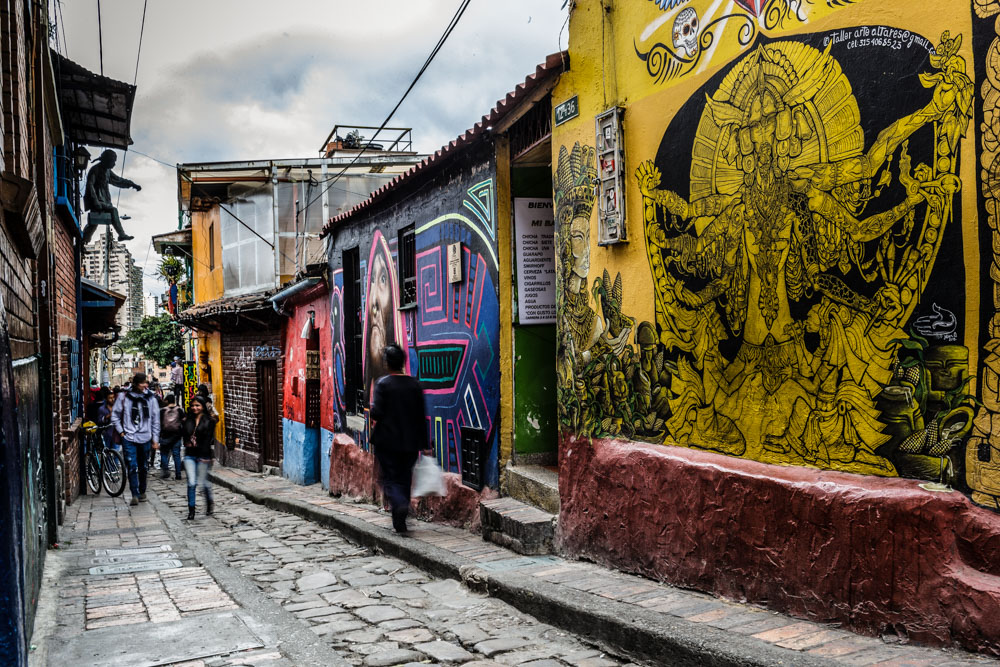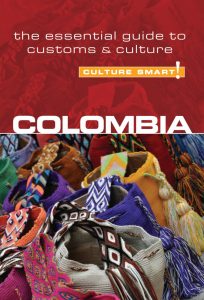
‘Street Art in Bogotá’ by Erin Murgatoyd
As Colombia’s capital, Bogotá is representative of the ‘forgotten history’ that plagues the country today. Memory has been repressed as a method of coping with the difficult past that citizens often feel they need to account for. It is for this reason that when I asked what was being celebrated on a Colombian bank holiday, I was greeted with a series of blank faces – people no longer remembered because history had not been transferred between generations. This forgotten past stems partly from repression by government figures, but it’s also common for it to be imposed by individuals themselves. Occasionally fragments of the forgotten world can be found, and it is Bogotá’s street art which is perhaps the greatest remnant of all.
Street art in Colombia makes a statement – the cities are awash with explosive colours and intricate detail, which is unavoidable even if making a very short journey. As it spreads its way through the cities, Colombian street art provides a weaving narrative of the country’s history and pieces together the attitudes and opinions of those who create it. Certain examples were particularly striking and spoke through images what words or memory could no longer express.

One significant event looms over the city. In 2011, Felipe Becerra was with three of his friends, painting his signature tag when two police officers discovered him. One officer chased Becerra and shot him in the back, later claiming that he had pulled out a gun and threatened to shoot him. Uncertainties arising through testimony and autopsy evidence incited public outrage, spreading the overriding view that the only crime he committed was that of painting graffiti and that the punishment was grossly disproportionate to this act. Further uproar was caused by the juxtaposition of Justin Bieber, who was protected rather than condemned by police when he himself took to the streets and tried his hand with a spray can – the unequal treatment of individuals was overwhelming. Consequently the police officer was dismissed and the legal ruling disbanded.
‘Graffiti’ as an art form is particularly interesting in Bogotá. Unlike most other countries around the world, graffiti is not strictly illegal but is instead prohibited in Colombia’s capital. When this legislation was introduced it may be expected that there was a level of backlash amongst Bogotános who did not approve of the ban. What was perhaps unexpected was the controversy the decision caused between the graffiti artists that dominate Bogotá’s walls. Graffiti began as an act of defiance and therefore, for many, if artists come to abide by these rules, their raison d’etre crumbles. There are certainly positives to the new legislation – without being held to criminal attestation, artists are able to spend more time on their work and consequently are able to focus on longer and larger projects that have greater meaning and value for the community. Alternatively, tagging has sharply increased since the legislation was introduced: this has become the one means of truly defying the system. If graffiti was permitted for the beautiful murals it created then covering them over has quickly become a mode of retaliation. The attitudes exposed in light of the legislation serves to demonstrate the sheer complexity and dynamic nature of the practice as a whole – it is not a thoughtless act but a powerful mode of expression.

DJ LU is a prolific member of the street art scene and his purpose is to make people stop and think, something he certainly achieves by mixing his metaphors to create something particularly profound. What at first sight is a pineapple quickly reveals itself as a grenade; the arms and legs of bugs are replaced by guns and soldiers fire hearts rather than bullets. His aim is to reduce violence and promote co-operation, and thus he provides a paradox for the police who have become stumped as to what they should do about his work.
Recently Bastardilla has revolutionised Colombian street art – forcing the capital to confront gender inequality through her pieces. What is perhaps her most famous work points towards the harrowing experience which shapes her art as a whole. Legend has it that Bastardilla fell pregnant, having been raped at a very early age. Without the support of family and feeling too young to manage alone, Bastardilla sought an abortion. From a Western perspective this is heart-breaking, but something individuals are able to manage – with medical and psychological support on hand. In Colombia, where ideology is still largely controlled by the Catholic Church, it is illegal to terminate a pregnancy unless it constitutes a health risk to the mother or the foetus, or the pregnancy is a result of rape or non-consensual artificial insemination. Before 2006, abortion was illegal in all circumstances. Bastardilla’s only option was to approach an illegal service. If this were not harrowing enough, once Bastardilla signed the final papers to proceed with the abortion process, it was revealed to her that she was in fact in the company of undercover police detectives – she had been duped. Bastardilla was put under country-arrest and told that if she did not have her baby, she would be imprisoned. This shocking tale can be heard and felt through the beauty of Bastardilla’s artwork. The playground which has been constructed in front of the wall demonstrates the enormity of Bastardilla’s image – and consequently the effort she has gone to in order to ensure that her voice is heard and paid attention to.
The street art scene has transformed Bogotá into an urban canvas whose physical beauty is only enhanced by the gravity and depth that is infused within these images. With new works popping up and disappearing on a daily basis, the capital is alive with the feelings and emotions of its inhabitants.

Photo credits:
www.radissonred.com/blog/art/street-art-in-bogota
www.matadornetwork.com/life/best-colombian-street-art-14-images
www.mikesbogotablog.blogspot.co.uk/2014/01/the-trouble-with-tagging.html
You can view our Culture Smart guide on Colombia in our South America section.
